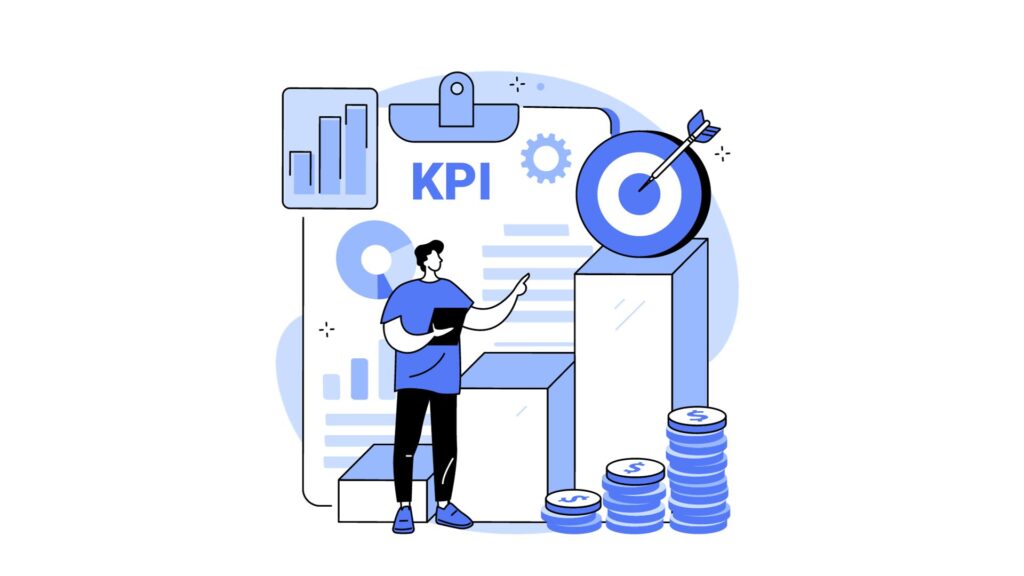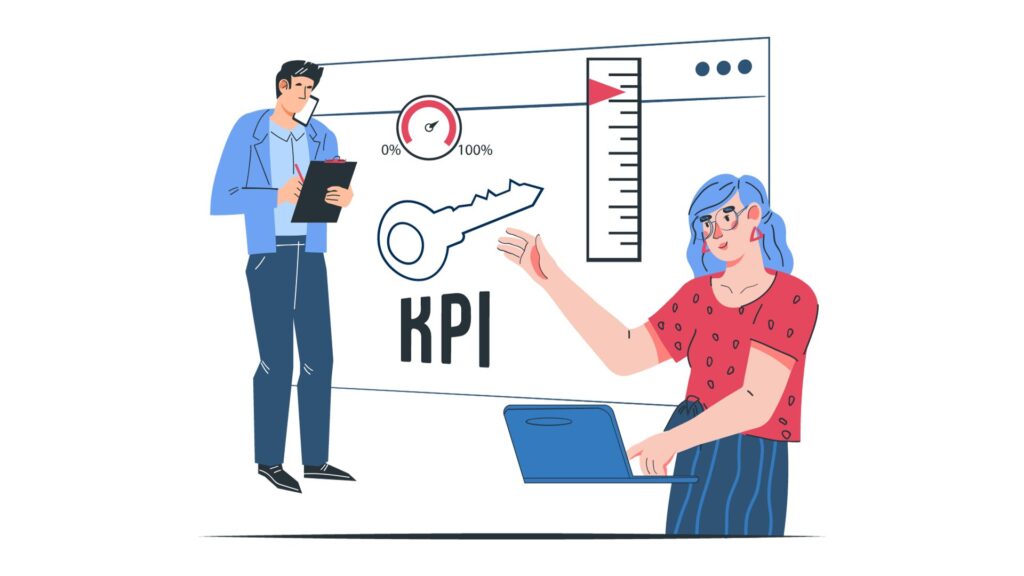In the data-driven landscape of today’s business world, strategic decision-making hinges on the effective use and interpretation of key metrics. Metrics provide a quantifiable measure of success, enabling businesses to assess their performance, fine-tune their strategies, and set realistic, data-backed goals. 📊📈
However, with countless metrics, which ones should you focus on for optimal results?
In this insightful post, we take a closer look at 13 essential quantitative metrics that serve as reliable indicators of success and provide strategies to optimize them.
Whether you’re a seasoned business strategist looking to refine your approach or a newbie hoping to gain insight into this aspect of business management, this guide is your key to making fact-based, strategic decisions. So, let’s dive in! 💪🔍📚
What are Quantitative Metrics?
As the name suggests, quantitative metrics are measurable and data-driven indicators companies use to gauge performance and progress. They present numerical data that can be employed to compare and analyze various business aspects. These metrics are vital in creating strategies, making informed decisions, and driving improvements.

Here are a few examples of which metric would you focus on improving: 📊📈📉
- Sales Revenue: This is a primary metric for any business. Tracking sales revenue helps determine the effectiveness of sales strategies, and it’s a significant indicator of overall business health. For instance, if sales revenue is consistently increasing, it’s a sign that your products or services are well-received in the market.
- Customer Acquisition Cost (CAC): This is the cost of acquiring a new customer, including marketing and sales expenses. A successful business aims to keep this cost as low as possible while maximizing customer value.
- Net Promoter Score (NPS): This metric gauges customer satisfaction and loyalty. It’s calculated based on responses to the question: “How likely are you to recommend our company/product/service to a friend or colleague?” The higher the score, the greater the customer satisfaction.
- Conversion Rate: It measures the % of users who take a desired action. For example, in an e-commerce context, the conversion rate could be the percentage of site visitors who make a purchase.
Quantitative vs Qualitative Metrics: Explained Here!
While both types of metrics have their unique worth, understanding the difference between quantitative and qualitative metrics is essential for effective data analysis and business decision-making. 📊🔍
Quantitative metrics, as we’ve already discussed, are numerical and measurable data that can be utilized for comparison and analysis. They offer a clear-cut, objective perspective of business performance. 💯 However, here are other examples of quantitative metrics which metric would you focus on improving include:

- Churn Rate: It is the % of customers who stop using your product or service. A low churn rate indicates high customer retention.
- Customer Lifetime Value (CLV): This is the total revenue you can expect from a customer over their relationship with your business. Higher CLV means a more profitable customer base.
On the other hand, qualitative metrics, though not numerical, offer valuable insights into the subjective elements of your business. 📊🔍 These metrics often come from surveys, interviews, focus groups, or reviews, and they can provide rich, in-depth feedback that quantifiable data might miss. 💡🗣️ For instance:
- Customer Testimonials: It is customer feedback on your products or services. They can offer insight into what your customers appreciate most and areas where improvements might be needed.
- Brand Reputation: This is a measure of how your business is perceived in the market. It’s often gauged through social media sentiment analysis and online reviews.
- Employee Satisfaction: This is often measured through surveys and can help you understand the morale and engagement level of your workforce. This qualitative data can drive strategies to improve company culture and reduce turnover.
Why are Quantitative Metrics crucial in the SaaS Industry?

In the Software as a Service (SaaS) industry, quantitative metrics serve as the compass guiding a company’s growth trajectory. 🧭 They provide hard numbers for assessing a company’s performance, enabling strategic decision-making and goal-setting. 💪 Let’s explore some key reasons behind the importance of quantitative metrics in SaaS: 📊✨
- Performance Measurement: Quantitative metrics like Monthly Recurring Revenue (MRR), Customer Lifetime Value (CLV), and Churn Rate provide clear insights into the health and success of a SaaS business. These indicators help identify trends, predict future growth, and understand the effectiveness of current strategies.
- Investor Attraction: Investors rely heavily on quantitative metrics to evaluate the potential of a SaaS company. A strong MRR growth rate, low churn rate, and high CLV can attract investors, leading to increased funding opportunities.
- Budgeting and Forecasting: Metrics such as Cost of Customer Acquisition (CAC) and Customer Lifetime Value (CLV) are necessary for efficient budgeting and accurate financial forecasting. By understanding these metrics, SaaS companies can make informed decisions on where to allocate resources to maximize return on investment.
- Customer Success Evaluation: Quantitative metrics like NPS or CSAT directly measure customer happiness, which is crucial for long-term SaaS success. By tracking these metrics, businesses identify areas for improvement to enhance satisfaction.
Why should you combine Quantitative Data with Qualitative Data?
While quantitative data provides the “what” and “how much” 📊, qualitative data provides the “why” and “how” 🤔💡. Together, they offer a comprehensive overview of your business performance. Here’s why they are more powerful in tandem: 💪🔍💼

- Understanding the Context: Quantitative data shows the numbers, but it often lacks context. For instance, while a low Net Promoter Score (NPS) indicates that customers are not happy, it doesn’t explain why they are dissatisfied. By complementing it with qualitative data, like customer feedback or reviews, you can understand the reasons behind the score and take appropriate steps to improve.
- Enhancing Customer Experience: When you have a high churn rate, it indicates a problem with customer retention. But, without understanding the reasons, strategies for improvement may miss the mark. Customer exit interviews (a form of qualitative data) can provide insights into why customers are leaving, offering a more effective roadmap for enhancing the customer experience and reducing churn.
- Refining Marketing Strategies: Quantitative data like website traffic, conversion rates, or social media engagement can indicate the success of your marketing strategies. However, it doesn’t provide a clear understanding of customer motivations, preferences, or needs. By integrating qualitative data such as customer surveys or focus group findings, you can refine your marketing strategies for better alignment with your target audience’s interests and behaviors.
- Employee Feedback: Employee satisfaction surveys can reveal a lot about your company’s internal health. While quantitative data, such as turnover rate, can indicate a problem, qualitative data, like employee feedback, can shed light on the nature of the issues, helping to devise more targeted interventions.
Which Quantitative Metrics Would You Focus On Improving: Here are the 13 Key Metrics
In the business world, numbers are essential for gauging success and making informed decisions. 🔢 Whether it’s a small start-up or a global corporation, quantitative metrics serve as the backbone for performance assessment. Here are 13 key quantitative which metric would you focus on improving for measuring success: 📊

- Sales Revenue: Perhaps the most straightforward metric, it measures the total income from the sale of goods or services. Increasing sales revenue is often a primary business objective.
- Net Profit Margin: This is the percentage of revenue that remains after all expenses have been deducted. A high net profit margin indicates a financially healthy company.
- Gross Margin: The percentage of sales revenue a company keeps after deducting direct production costs.
- Operating Profit Margin: This indicates the proportion of a company’s revenue that remains after deducting variable production costs like wages and raw materials.
- Return on Investment (ROI): An important metric for evaluating the profitability of an investment or to compare the efficiency of different investments.
- Customer Acquisition Cost (CAC): It includes marketing and sales expenses.
- Customer Lifetime Value (CLV): A projection of the revenue a business will generate from a customer over the lifetime of their relationship.
- Churn Rate: the rate at which customers discontinue business. A high churn rate could indicate customer dissatisfaction.
- Conversion Rate: The percentage of users who take the desired action. In a sales context, this might mean the % of website visitors who make a purchase.
- Employee Turnover Rate: The rate at which employees leave a company. High employee turnover can be costly and may indicate deeper issues within the company culture.
- Operating Expense Ratio (OER): A measure of operational efficiency – it shows what portion of income is being spent on operating expenses.
- Inventory Turnover Ratio: This indicates how many times a company has sold and replaced inventory during a given period.
- Debt-to-Equity Ratio (D/E): It measures a company’s financial leverage by comparing total liabilities to shareholders’ equity. It demonstrates a company’s use of debt to finance its assets.

These metrics, when tracked over time, can provide valuable insights into a business’s financial health, operational efficiency, and overall performance. They serve as the pulse of the company, indicating areas of strength, pinpointing opportunities for improvement, and guiding strategic decision-making. 💪💡📈
How can OnboardSaaS Help You Track and Optimize Qualitative and Quantitative Metrics?
Onboardsaas is a robust platform designed to assist businesses in effectively tracking and optimizing both qualitative and quantitative metrics. Here are a few ways our platform can benefit your business: 📈💼✨

- Comprehensive Dashboard: Our platform provides a comprehensive dashboard that consolidates all your crucial business metrics in one place. It includes sales revenue, churn rate, customer acquisition cost, and many others. The dashboard presents data in an easy-to-understand format, facilitating quick and informed decision-making.
- Automated Tracking: Keeping track of numerous metrics can be a daunting task. Thankfully, Onboardsaas.com offers automated tracking. Our platform continually and automatically monitors your key performance indicators, eliminating human error and freeing up your team to focus on other tasks.
- Integration with Various Data Sources: Our software can seamlessly integrate with a multitude of data sources. It means you can pull in qualitative data from customer interviews, feedback forms, social media comments, and more. Our platform can then pair this data with quantitative metrics to give you a holistic view of your business performance.
- Actionable Insights: Onboardsaas doesn’t just present you with raw data. Our platform leverages advanced algorithms to analyze this data and generate actionable insights. This feature allows you to identify trends, spot potential issues, and understand the factors driving your metrics.
- Optimization Tools: Beyond tracking your metrics, our platform also provides tools to help you optimize them. For instance, our software can help you identify areas where your customer acquisition cost might be too high and suggest strategies to bring it down.
- Real-time Reports: With Onboardsaas, you can generate real-time reports on various metrics. These reports can be customized to suit your specific needs, whether you want to focus on your net profit margin, employee turnover rate, or any other metric.

Onboardsaas offers a streamlined and comprehensive solution for tracking and optimizing your qualitative and quantitative metrics. 📊🚀 By leveraging our platform, you can gain a deeper understanding of your business, make data-backed decisions, and ultimately drive your business toward greater success. 💪📈
Conclusion
Tracking and optimizing both qualitative and quantitative metrics is essential for a clear understanding of your business’s health and performance. 📈
Utilizing a comprehensive platform like Onboardsaas can significantly simplify this process, providing you with a systematic approach to monitoring critical metrics, generating actionable insights, and formulating strategic decisions. 💡
By doing so, you’ll be equipped to drive your business towards its goals more effectively and efficiently. 🚀

10+ years experience in Marketing and Operations
